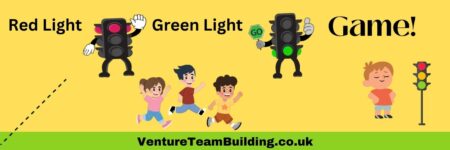Teams must work together to complete a puzzle as quickly as possible. Initially the teams will be divided and given separate bags of puzzle pieces. They will think that they are competing against each other and then come to realise that they have no way of completing the puzzle unless they work with the other sub-teams as they hold the missing pieces of the puzzle.
Resources: 1 x large jigsaw puzzle and small bags to hold the pieces
Time: 30-45 minutes
Space Required: Small. Indoors or Outdoors
Group Size: 8-16 people
Jigsaw Puzzle Pieces Setup
- Divide up the puzzle and place an equal amount of pieces into each team bag
- Split the team into 2 smaller sub-teams (or more depending on the size of your group) and hand each team a bag.
Jigsaw Puzzle Pieces Team Activity Instructions
- Provide each sub-team with a bag of jigsaw puzzle pieces. Instruct them to assemble the puzzle as quickly as possible. Try to ensure that each teams puzzle pieces appear to be an entire puzzle.
Introducing the exercise:
“The aim of the exercise is for each team to assemble the jigsaw puzzle as quickly as possible using the pieces provided. All teams have the same puzzle. You will receive no additional instructions”
- Teams will assume that they competing against one another, however there is only one puzzle and the pieces have shared out between the two teams. They key point of the exercise is for the team to identify the problem and resolve it by discussing it between them and working together.
- Provide enough time for the teams to work on the puzzles. Generally, they shouldn’t need any more than 30 minutes to complete, although this will change depending on the complexity of the puzzle and group size.
Tips and Guidance
Try and stay clear from giving them the solution to the problem. If they ask you, reiterate the introduction to the task as before and let them work it for themselves.
You can start the exercise with either the teams working in the same room or different rooms. If sub-teams are working in the same room, they will discover the problem and solution quite quickly and work together to assemble the puzzle. If you decide to start them in different rooms, it will take them a little longer to realise and work out how to resolve the problem.
Try to use a jigsaw puzzle with enough pieces to keep all team members actively engaged during the exercise. You should run the activity in a suitably sized space, big enough so that all team members can view the puzzle and work together.
Larger teams that have more than five people will be challenged in how they organise the task, leadership and teamwork (ensuring everyone has a role within the team).
This type of exercise demonstrates that all team members (or teams) make up the whole, and often no individual or team can do it alone. Sometimes the missing piece of the puzzle is often held by others.
Suggested Learning Outcomes:
- Strategy
- Leadership
- Problem solving
- Communication skills
- Leadership
Reviewing Questions:
- What was your first plan of attack when presented with the challenge?
- What problems did you encounter during the exercise and how do you overcome these?
- Once you identified the problem, how did you respond?
- Why was cooperation essential for this team activity?
- Did you nominate a leader to begin?
- Did you communicate well and was everyone involved?
- What makes a good team?
- Looking back on the exercise, what things would you say you did well as a team?
- What is one thing you can take away from the activity? How can you apply what you learned?




Thanks for sharing.
Vernita – You’re Welcome.
Very nice post. I simply stumbled upon your blog and
wanted to say that I’ve truly enjoyed browsing your posts.
Glad you enjoyed it – Let us know how your team building activity went and which were your favorites.
My division is having a division meeting, and I would love to use this as our team building exercise. We have between 67-72 employees that will be participating. What size puzzle would you recommend?
Kimberly,
Great Question. For the Jigsaw Puzzle activity you will want smaller groups of 5-8. (Personally I prefer 5 people as the more people you get the more likely someone will be left out or may be more of a watching mode vs actively engaged) with the numbers you gave me 60-70 people that would mean you would need break out in to 12-15 teams. I would shoot for 75-100 pieces per team. That would put your total puzzle pieces in the range of 900-1500 size puzzle. Now realize that for some folks once they get organized and set up their system if they’ve done puzzles before I would expect them to start organizing their puzzle pieces – finding 4 corners and outside edge and grouping by color or other similarities. Once they see that there aren’t 4 corners they will start to ask questions. So the fewer the pieces the sooner they get to that point. I hope this helps and would like to hear back on how it went with this large group.
Great post— I appreciate you giving this fantastic lesson. It is quite beneficial to me. . I learned a lot about a jigsaw puzzle. keep up the good job. thanks for sharing.
Glad you found it useful!